In this article, we have chosen two criteria to determine the degree of danger of the effects of lightning on a person, buildings, and equipment. The first is: can people really pull through the dangerous consequences? Let's suppose that the lightning strikes a person in an open field. Often he or she becomes completely helpless. However, if the lightning strikes the building of the institution, and such this strike caused a fire, then, with the properly organized fire escape routes, people have great chances to be saved and not even get hurt. The second criterion is the number of possible victims after the lightning strike.
1. Lightning strike into a warehouse or a factory storing flammable or explosive substances
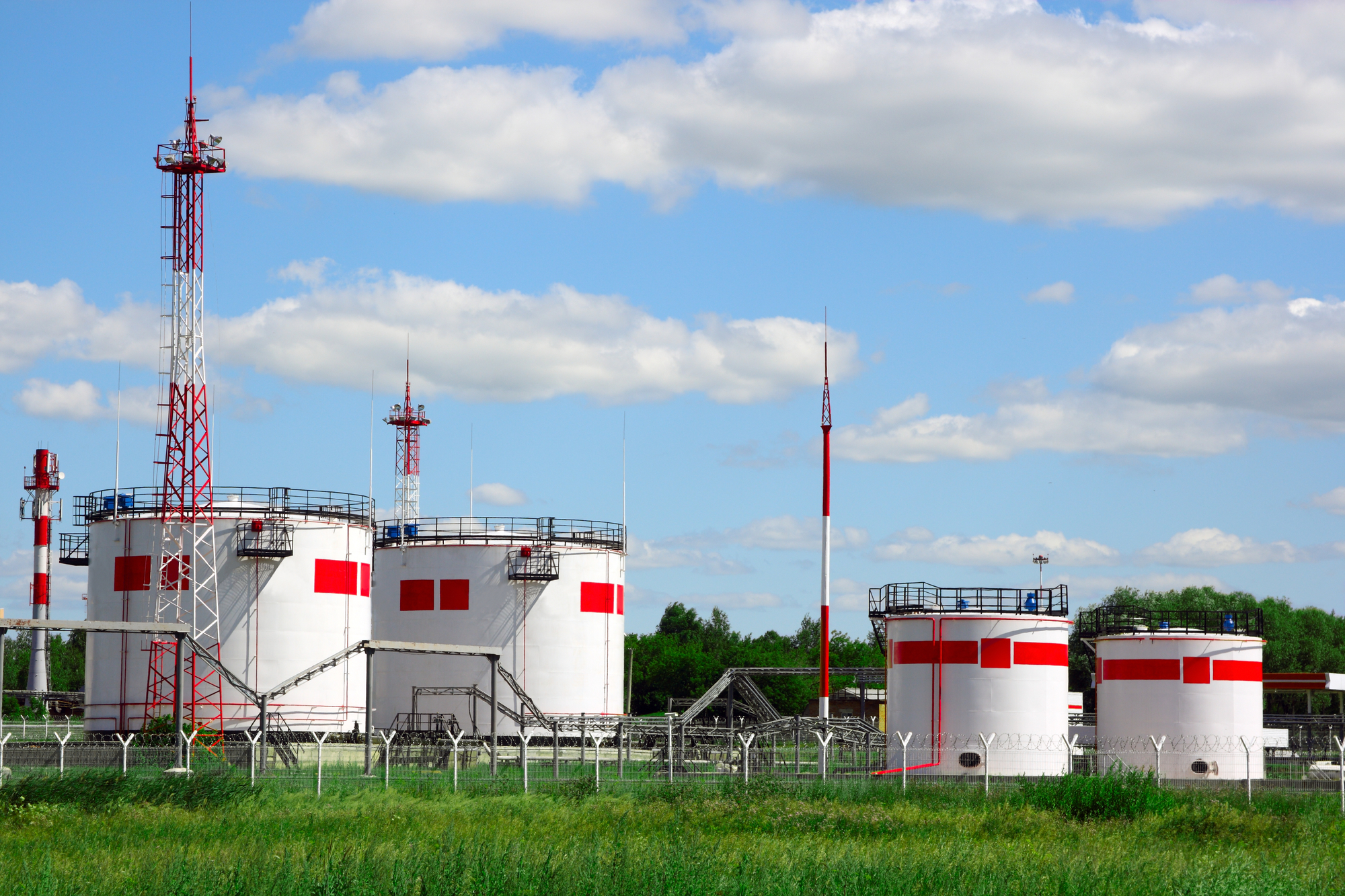
The objects of this type are extremely dangerous because not only direct lightning strikes, but also the induced electrostatic voltage causing a spark can lead to an explosion or a strong fire. The lightning does not need to strike directly to a building to cause a fire or explosion. It is sufficient to have a "pre-thunderstorm atmosphere" in the area where the objects are located.
Sliding discharges present another problem. To prevent explosions caused by static electricity generated by friction, the storage with easily combustible or explosive substances is consistently grounded. If the lightning protection system is arranged improperly, single sparks can slip between the earthing devices of the lightning arrester and the storage. Induced static electricity and creeping discharges are referred to as the so-called secondary effects of lightning, while direct lightning strikes are referred to as the primary effects.
The blast wave propagates with a velocity, at which it is impossible to evacuate people. For example, 1 kg of TNT explodes in 0.00001 s. In the epicenter of an explosion, the temperature is up to +3,000 °C. And an additional dangerous factor is the release of harmful substances during combustion.
Note that, under certain conditions, the substances that are completely harmless in everyday life can be explosive. For instance, a flour. A bag of flour will not explode. But in a flour mill, a suspension of flour, which can exploded by a spark, flies in the air. The same holds, for example, for fertilizer plants, grain elevators, and breweries. That is why the lightning protection for factories and warehouses should be worked out carefully, paying attention to the nature of the products to be stored and used in the production cycle.
2. Lightning strike to a person or the effect of the step voltage
A chance to get the direct lightning strike into the body during the storm is estimated as 1 : 900,000 to 1 : 300,000. The direct lightning strike to a person usually occurs in open areas. In this case, the effect is evaluated as several hundred kilovolt. But in spite of this, only 10% of people who suffered from the direct lightning strike die immediately. The reason is that, for a person, the effect of the electrical current on the heart, which may cause arrest, is dangerous rather than the electrical current in general. Moreover, the dangerous effect of the electrical current includes muscle convulsions.
The current acts shortly during the lightning strike. Moreover, it flows primarily along the body surface. As a result of this, the heart does not stop each time, and convulsions do not lead to the fatal consequences. Especially if a person has received the first aid timely.
However, a large percent of those who survived from the lightning strike must not give the wrong impression that the lightning is not very dangerous. The lightning strike usually causes serious irreversible changes in the body which may be observed in many years. In particular, about 50% of people that have survived the direct lightning strike experience vision and hearing problems.
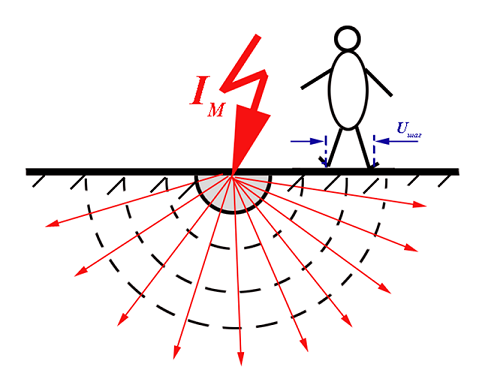
Nature of the step voltage
During the storm, it is not recommended to stay in an open area or stand near the trees, water bodies, and other locations more likely subjected to the lightnings. The danger is in the so-called step voltage related to the secondary lightning effects. During the lightning strike, the electricity "flows" along the earth. If a person stands nearby, a potential difference appears between his/her legs. The lightning current may easier flow between the human legs than along the earth surface.
The step voltage is dangerous at the distance of the order of several dozens meters from the lightning strike point. And the step voltage can reach several dozens kilovolts. The most dangerous situation is when a person, trying to protect against the lightning strike in the open area, or due to bad feeling caused by the stress gets down to earth. Then the distance between the extreme points of his/her body will be maximum and, respectively, the potential difference will be several times more compared to the situation when he was in the same location. Finally, the dangerous step voltage may appear near the incorrectly installed lightning arrester.
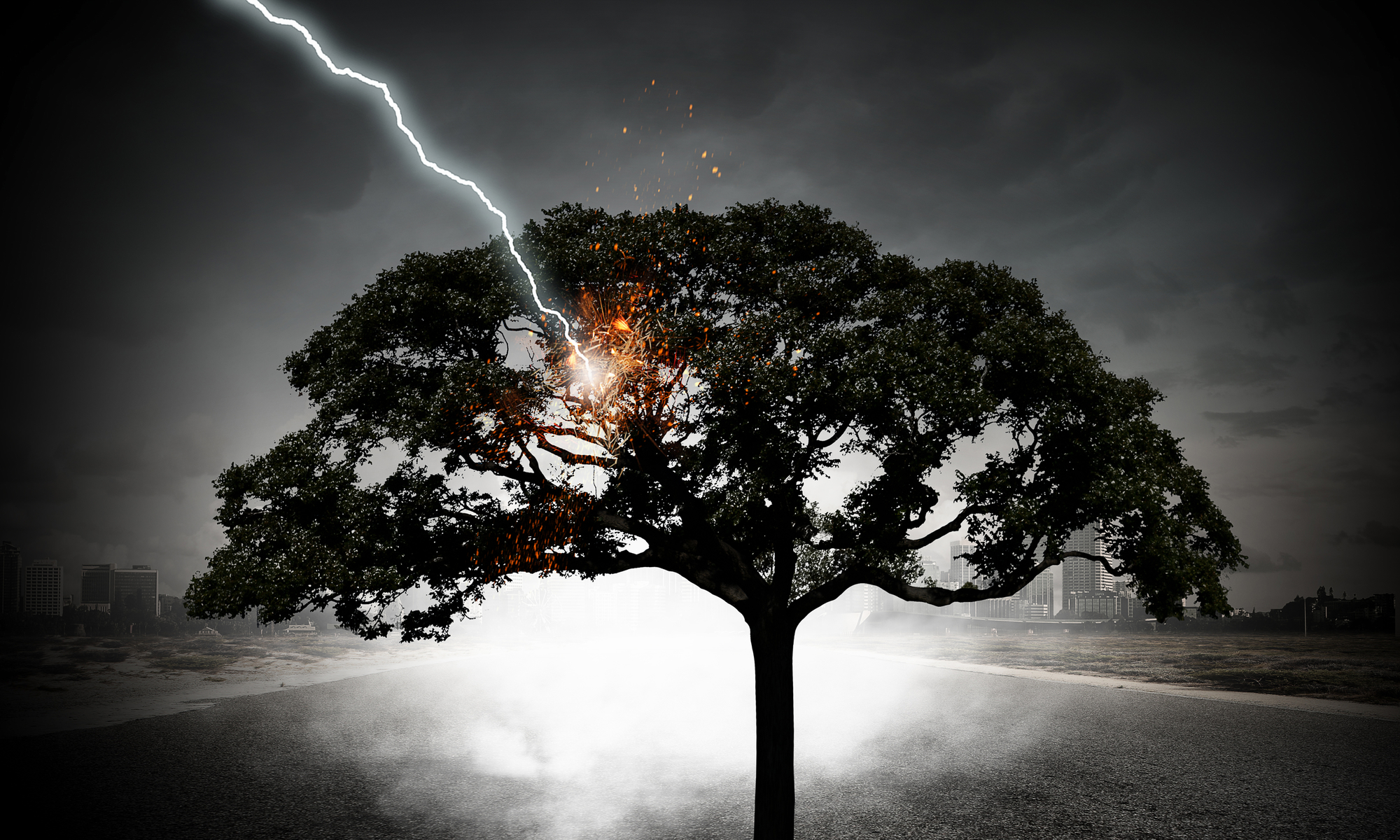
When the lightning strikes a tree, a person under the tree may be subjected to the step voltage.
There are no available statistics for the step voltage effect during the lightning strike. But we can suppose that these cases are not less than in case of the direct lightning strike. A psychological factor takes place here. Few people would decide to go to an open area because our intrinsic instincts will fight with it. A different thing is to hide from the storm and rain, e.g. under a tree. Or under the improvised hover made of metal pipes usually installed without the consideration of the need to protect against the lightning strike.
3. Lightning strike to a residential, commercial, administrative, or production (except for the buildings shown in item 1) building with the subsequent fire
In the case when the construction materials meeting the fire safety standards are used in the administrative, commercial, or production building, they have operating emergency doors, and the personnel has received the briefing, the damage will be limited only to the damage or loss of property during the fire. But in real life, you should pay attention to two aspects.
First, not in all cases, the finishing materials of the suitable types are used and not in all cases, the evacuation paths are provided, which can be immediately used. Sometimes, the problems appear due to inconsistency of the standards in different departments. The jewelery shops are a textbook example. According to the standards of one department, the windows should be provided with secure grates. According to the standards of another department, the grates should be removable in case of a danger. Surely, the modern technologies allow combining these requirements, but the final solution is often too expensive for the shop owners.
Second, when people leave the building on fire, they go to the streets where the lightning may strike them. Therefore, we have to provide the lightning protection for the adjacent territory.
Particularly many problems are typical for the residential houses, since there are no effective means to make the residents follow the fire safety rules.
4. Infrastructural objects failure
The lightning strikes may lead to the failures in the communications and power systems. This negative effect has been known for more than 100 years. What has the modern digitalization brought?
Today, the control computers are widely used. If we do not take any special measures, then not only the direct lightning strikes have an effect but also the induced static electricity. For example, we know the cases when, due to the lightning effect, the elevators or water supply failed for several hundred meters from the accident point, although the power was supplied correctly.
The lightning exposure with the digital control system that is often not backed-up by the mechanical means is especially dangerous for the modern vehicles. For example, the cases are known of the stop of high-velocity trains as a result of the lightning strike only because the control computer has halted. Naturally, we cannot stop the progress, but during the control system development, we have to take into account the need to provide the lightning protection even though we are talking about trains instead of planes. But thus far, there are people in vehicle cabins who control it and capable of taking the control in case the automatic system fails. What happens when the era of unmanned vehicles comes? It means that in the nearest future, we will have to seriously promote the lightning protection science.
5. Psychological impact on humans and animals
The lightning strike near a person is a significant stress, even though it has not led to any physical damage to the body. In future, it can lead to phobias. This problem has been existing for a very long time. However, today, it is aggravated by significant information flows that can fix phobias in the human conscience. The current filmmaking industry actively exploits fears to increase the profit, and the computer technologies allow showing the lightning effects on the screen rather vividly. Internet, especially social media, is almost a perfect media for distributing spine-chillers.
Moreover, domestic animals, especially dogs, are afraid of the lightnings. It is a huge problem when dogs run away from their owners during storms. If the dog was specially trained to protect the owner, when it gets into the unknown environment combined with the stress, it may result in aggression against other people.
Conclusions
To protect against the above-stated lightning and storm effects, we usually have to deal with the departmental instructions or with large amounts of different standards. Let's say that the lightning protection for the explosive substance storages is governed by the departmental instructions and the company standards. There are no mandatory lightning protection standards for private houses in the villages in our country. Concerning the lightning protection of the public places in open areas, e.g. in parks, then we have to look for new approaches each time.
It is especially difficult to protect objects from the secondary lightning effects, because, due to the common digitalization, such effect becomes really dangerous. For all of this, we need qualified and well-trained specialists. The engineering company that designs the lightning protection must have skills and experience during different projects since we have to provide the lightning protection both in buildings and in adjacent territories. Contact ZANDZ.com. In this case, you will obtain solutions that will allow to securely protect your objects against different lightning effects, both primary and secondary.
Related Articles:
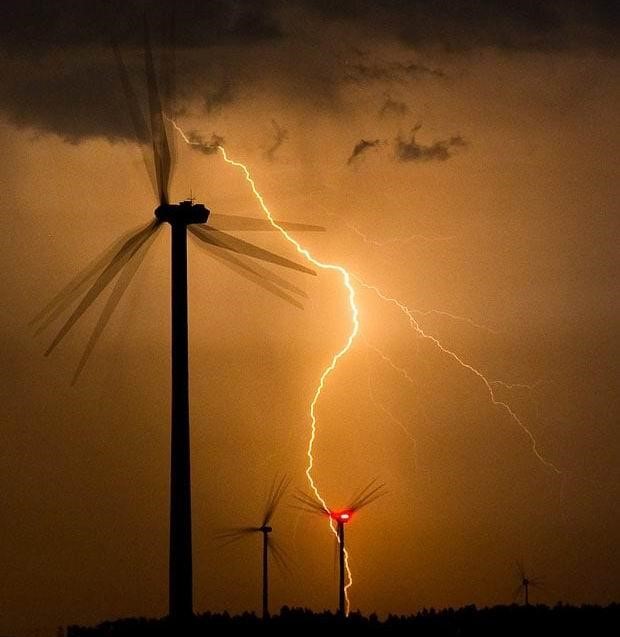 World statistics: when it is impossible to do without lightning protection
World statistics: when it is impossible to do without lightning protection
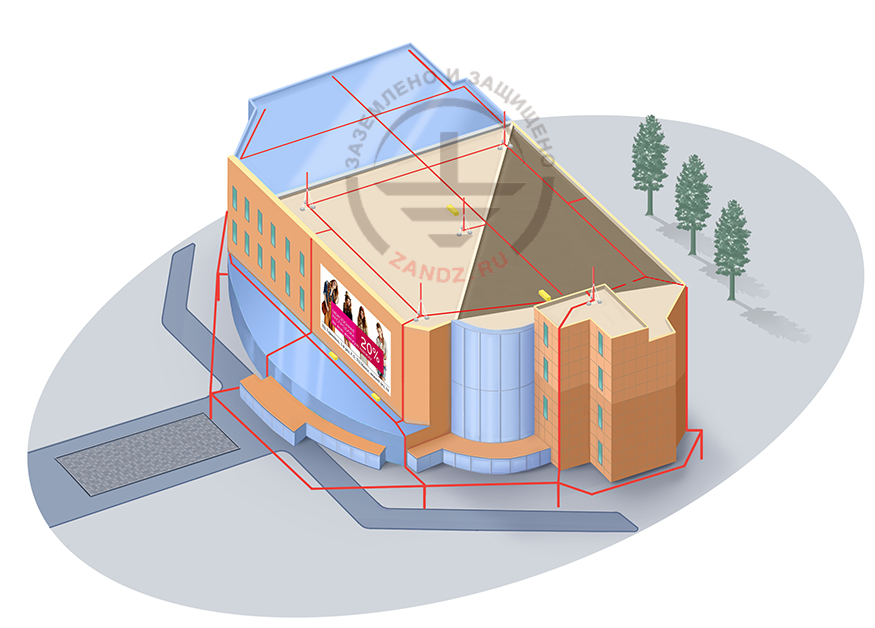 Shopping center lightning protection project
Shopping center lightning protection project
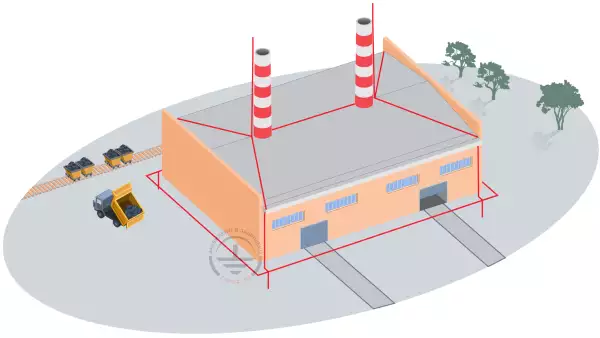
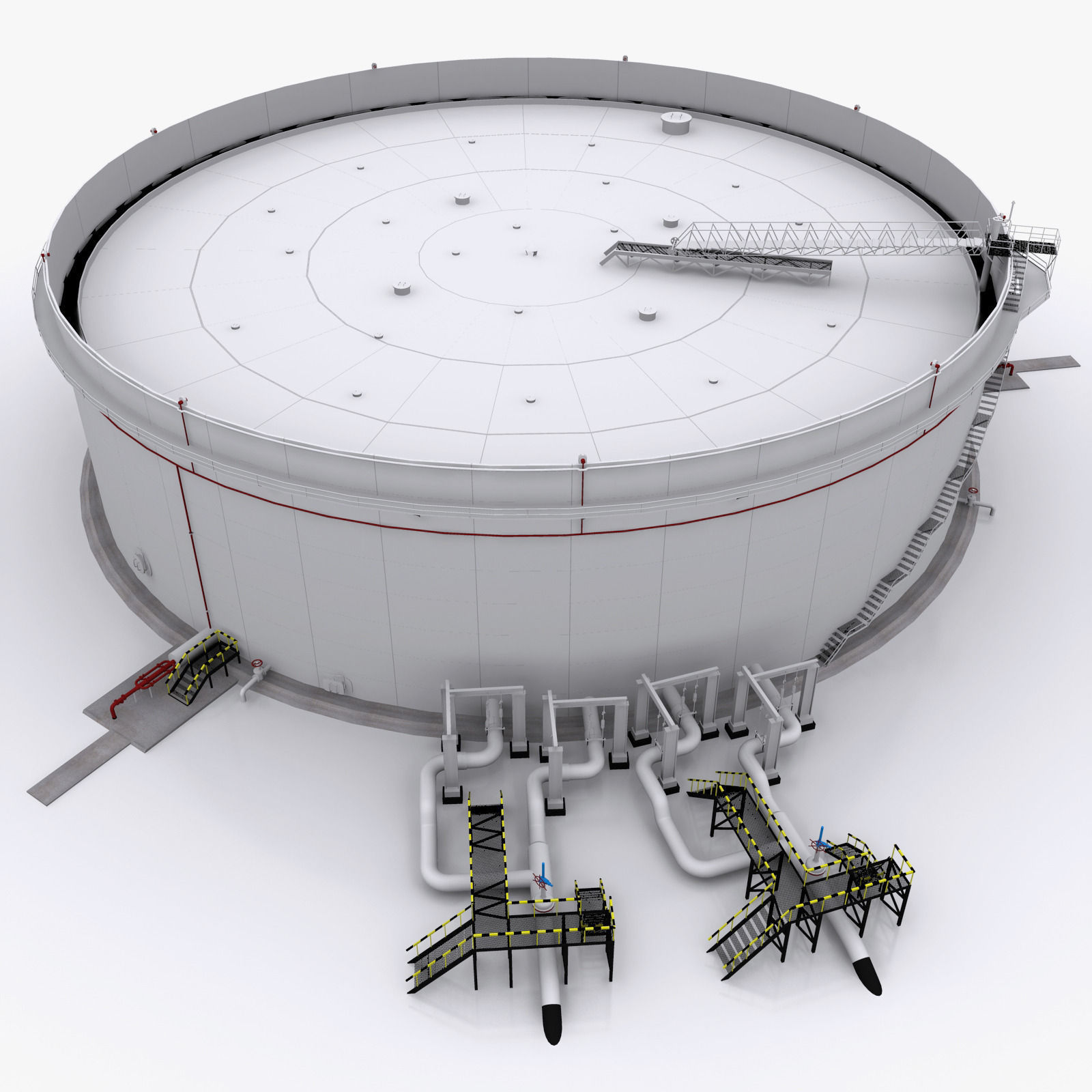 Protection of Fuel and Lubricant Materials (FLM) Storages with Floating Roofs Against the Static Electricity
Protection of Fuel and Lubricant Materials (FLM) Storages with Floating Roofs Against the Static Electricity



